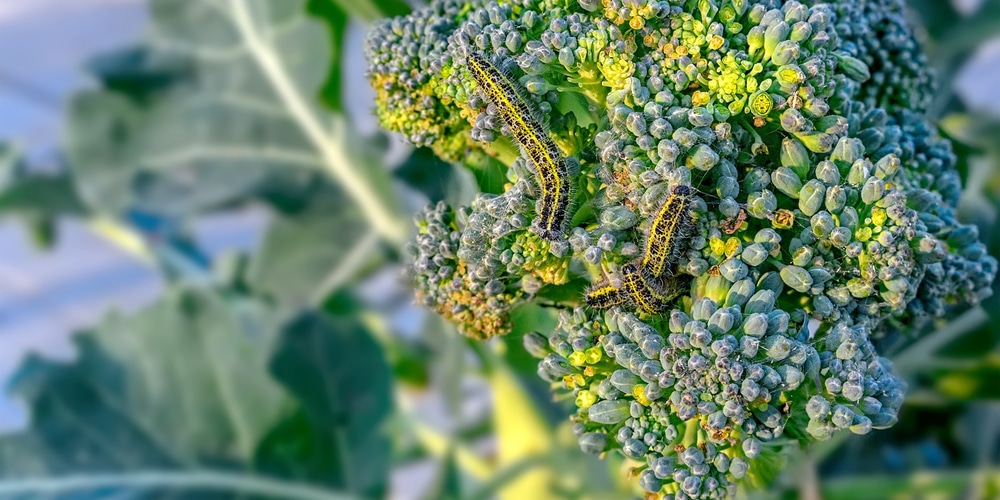Worms are probably the last things you’d want to see in your vegetable garden. They’re destructive and can quickly whittle down your crop to stumps in a matter of days. Worms in broccoli are usually not a good sign, and there are several ways you can get rid of worms in broccoli.
Why Are There Worms in Broccoli Plants?

Worms that you might see eating your broccoli plants are usually any of the three types- cabbage loopers, cabbage worms, or diamondback worms. Each has its distinct color, markings, and size.
Cabbage loopers are light green and have white stripes on their sides. These insects feed on broccoli leaves and leave large holes. They are known to get into broccoli heads as well. As they grow, cabbage loopers turn into brown moths.
Cabbage worms are also green but they have velvety skin on the surface. They usually get into broccoli leaves and the heads, which make them a particularly destructive and difficult pest. The worms turn into white moths that hang around your broccoli during the day.
Diamondback worms are light green and sport v-shaped markings on their backs. These insects leave bullet-like holes on the leaves and can also get into the heads, causing unwanted contamination. The worms turn into gray moths that have distinct diamond patterns.
The reasons why there are worms in broccoli may be the following:
Crops Are Not Rotated
Crop rotation is a vital practice especially if you intend to grow broccoli and similar vegetables. The process ensures that larvae won’t build up in the soil and cause an infestation when your broccoli has grown.
Too Much Debris in the Soil and Surroundings
Worms, in general, love to hide among debris and make it their home. Weeds, rocks, and tin cans are just some of the few items that worms like to live in. By removing them before you plant your broccoli seeds or seedlings, you won’t give these pests a reason to stick around.
General Neglect
Not taking good care of your broccoli may also lead to the presence of pests, including worms, aphids, and diseases. It’s best to check up on your plants’ health now and then in all their growth stages.
How to Prevent Worms in Broccoli
Add Row Covers
Row covers are considered one of the best methods to stop the presence of worms in broccoli. They are widely available in garden and hardware stores and come in a variety of materials and sizes. You can even create a makeshift row cover using several household and garage items.
Row covers can serve as a shield to ward off butterflies and moths laying their eggs on your broccoli. As an added bonus, you get frost and heat protection when you put your broccoli plants in them. As an alternative, you can fit the broccoli heads in nylon stockings.
Inspect and Remove as You See Them
Hand-picking cabbage worms and pests from broccoli is a common practice among gardeners and vegetable enthusiasts. For those who are squeamish, there is a way to kill these worms without touching or crushing them by hand. Simply fill a small bucket with soapy water and use chopsticks or a tong to catch the worms, then put them in the bucket to kill them.
It’s best to inspect and pick worms every time you water your plants. This way, you will be able to control and manage their growth so the worms will not annihilate your harvest. You won’t need to spray insecticide if you regularly handpick worms off your broccoli.
Proper Watering and Fertilizing
Broccoli and other vegetable plants are more susceptible to pests and diseases if they are stressed. This means worms are more likely to appear if you don’t water them enough or keep the soil filled with nutrients.
To address the fertilization problem, you can amend the soil with organic compost before planting the seeds or seedlings. Remember to follow a watering schedule so the soil doesn’t completely dry out.
It is worth noting that broccoli needs consistently moist soil, especially in drought or hot conditions. However, you’ll want to make sure not to overwater or else your plants will experience wilting and root rot.
Related Article: What is Eating My Broccoli Leaves?
